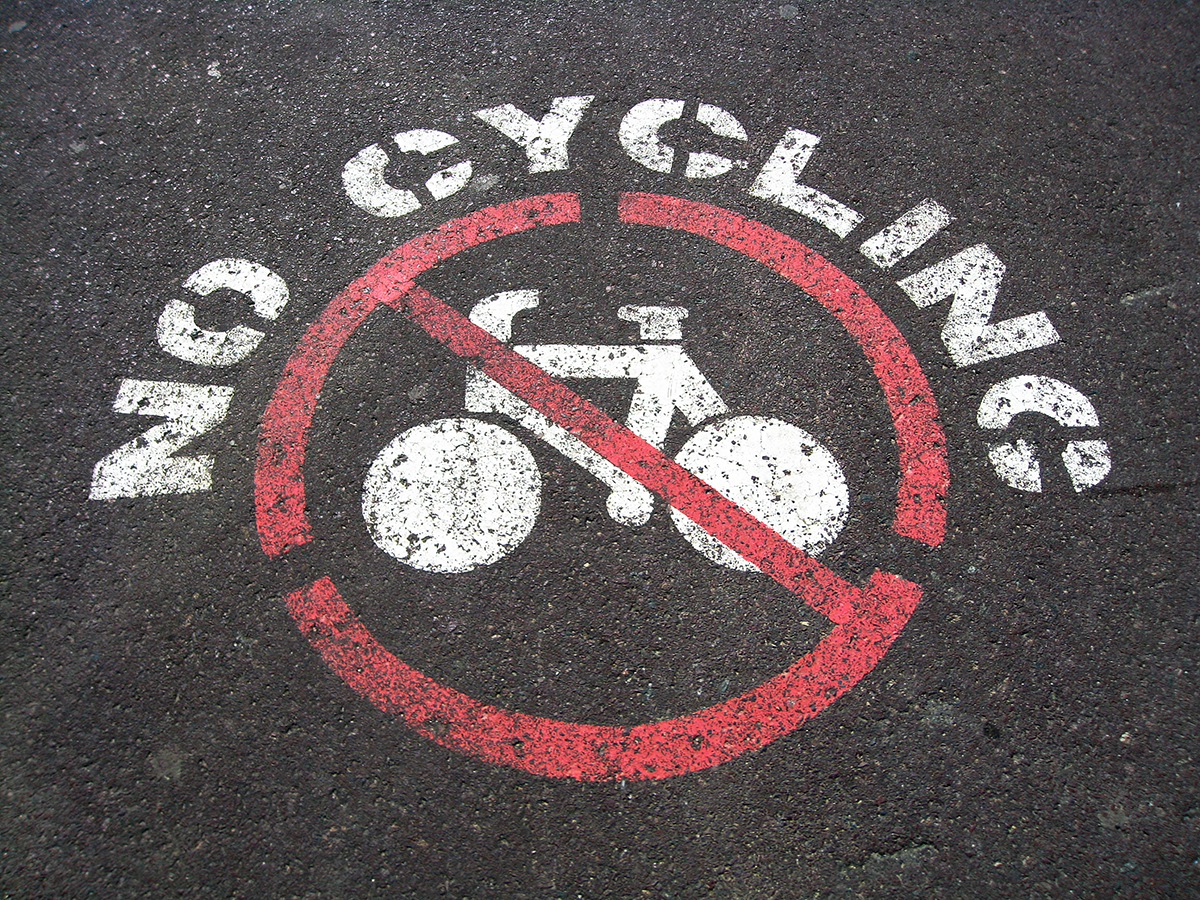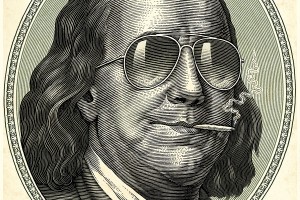A Bikeless, Car-Filled Boston Is a Past Worth Leaving Behind

No Cycling by Kelsey Ohman on Flickr/Creative Commons
Mid-20th century Boston was all about destroying things and making space for automobiles instead of people. We leveled entire neighborhoods and kicked families out of homes in our quest to satisfy the demand to make the suburbs happen in the city. It was the future, they said, when they showed Mayor John Collins plans for the Soviet-style hellscape that is City Hall Plaza. Collins reportedly gasped in shock when he saw what was going to replace the bustling red light district at the city’s core.
Lagoons of parking spaces, public spaces devoid of life, and hideous buildings serving only to house unused cars was Boston’s vision of the future in the 1950s and 60s.
On Wednesday, Boston Globe columnist Jeff Jacoby, the paper’s only consistently conservative columnist, repeated those dusty sentiments, scolding bicyclists for attempting to take away precious space on streets from cars.
In his column, Jacoby rambled off the same, all-too-familiar laundry list of charges against bicyclists: they don’t obey traffic laws, they’re a nuisance to more important motorized methods of transportation, and ultimately, should not be allowed on the roads. This hackneyed critique ignores the fact that the bicycle is only going to grow in popularity as a method of transportation in Boston, a city where the majority of commuters do not use a car to get around town. Commuting by bicycle to work and school has increased in Massachusetts by 103.8 percent since 2005. This is hardly a local problem, as evidenced by the decline of our national car culture. While the car may be king in other parts of the country, it’s simply not the case within the bike-friendly confines of Route 128.
While Boston continues to improve its bicycle infrastructure, the city’s neighbors already have healthy biking cultures that accommodate cyclists. This warm welcome that bicyclists enjoy in surrounding communities will only put further pressure on Boston to extend a similar one. Many of the changes being implemented in Boston are measures Jacoby should welcome, like protected, dedicated bike lanes, more off-street paths, and stronger enforcement of biking laws and regulations.
One of the most common complaints from drivers who hate cyclists is the anecdote that they violate the so-called rules of the road. While many drivers say they have seen a bicyclist ignore a red light and blow past a line of idling cars, there is little data specific to Boston that can tell us how often this occurs, or how much of a problem this behavior creates. The effectiveness of enforcing state laws for bicyclists is questionable, however. Why do bicyclists often violate some of the rules of the road that requires them to operate like cars? Ask them! They’ll tell you it makes them feel safer because they’re not riding next to drivers that are playing on their phones while operating 4,000-pound vehicles that can squash them like a bug. It’s an act of self-preservation, not a wanton disregard for the law.
Jacoby is right when he takes stock of the differences between cars and bikes: cars, which “weigh thousands of pounds, operate at 300-plus horsepower.” can kill people. When was the last time you heard of a bicyclist on a 20-pound fixie striking and killing someone on the streets of Boston?
Jacoby’s dated call to remove bicycles from the streets of Boston is a distant throwback to a time when our transportation priorities focused on cars and nothing else. If anything, Boston should continue on its path to make it easier for bicycles and automobiles to coexist—not separate them.


